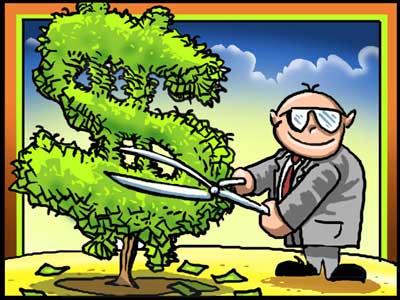 We took our last round of disaster protection back in March and we improved those positions as the market kept heading up and now we’re getting our big pay-offs.
We took our last round of disaster protection back in March and we improved those positions as the market kept heading up and now we’re getting our big pay-offs.
Since you know I am a big fan of taking cash off the table in either direction, let’s not be greedy and look at ways to “roll” our downside protection into new downside plays so we can set SENSIBLE stops on our now deep in the money short plays (very similar to our Mattress Strategy). Keep in mind that this is the biggest market decline we’ve had since February so adding a layer of protection here doubles our returns if this is the first leg of a major sell-off, or it gives us a smaller hedge that we can roll up later while we take our bigger hedges off the table. As I have to say WAY too often to members – It’s not a profit until you cash it in!
Hedging for disaster is a concept I advocated during another “recovery,” in October of 2008, where we made our cover plays to carry us through a worrisome holiday season and into Q1 earnings – “just in case.” That “just in case” saved a lot of portfolios! The idea of disaster hedges high return ETFs that will give you 3-5x returns in a major downturn. That way, 10% allocated of your portfolio to protection can turn into 30-50% on a dip, giving you some much-needed cash right when there is a good buying opportunity. At the time, I advocated SKF Jan $100s at $19. SKF hit $300 around Thanksgiving and those calls made a profit of over $280 (1,400%), so putting even just 5% of your portfolio into that financial hedge would give you back 75% of your portfolio when you cash out.
Keep in mind these are INSURANCE plays – you expect to LOSE, not win but, if you need to ride out a lot of bullish positions through an uncertain period, this is a pretty good way to go. We cashed out our Buy List on March 18th, with the S&P pretty much where it is right now and, since then, I’ve had a very hard time making long-term bullish picks. In fact, this weekend I said that I would have an easy time making a Sell List as there were so many overbought companies. Once we cash out our long-term holdings (and 75% of your portfolio is in sensible, well-hedged long-term plays,…



